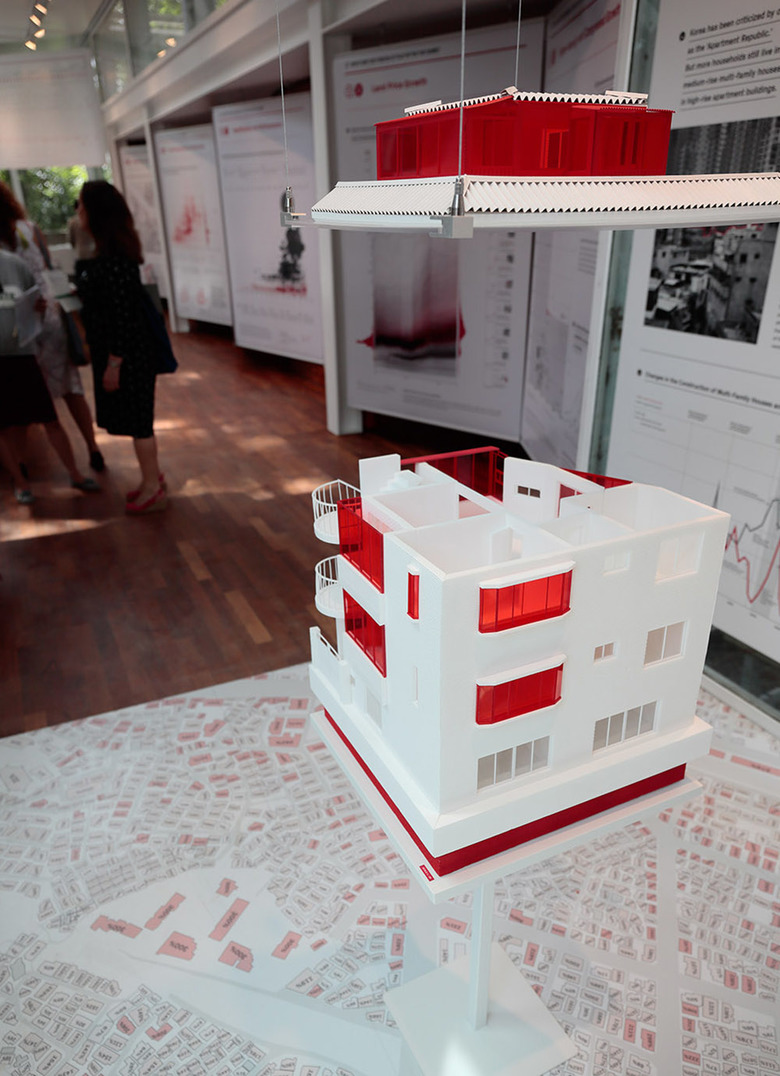The FAR Game
The Korean Pavilion of the 2016 Venice Architecture Biennale focuses on how the country's architects "perform a high-wire balancing act" between the Seoul metropolitan area's high land values and the government's strict building regulatory system.
This balancing act is referred to as "playing the FAR game," where FAR refers to floor area ratio, the ratio of built area to site area. According to curator Sung Hong Kim, almost all architects in Korea must play this game of quantity to gain commissions, making it the "front line of architecture in Korea." Subtitled "constraints sparking creativity," the Korean Pavilion presents 36 projects where architects maximize floor areas to provide both private and public benefits.
The presentation and analysis of the 36 projects in the pavilion result in eight design tactics that are used in various combinations. These include "attaching layers of building surfaces," "increasing number of stories by creating voids," and "extending out areas exempt from calculation." Having worked on a number of large-scale residential projects in Korea, I can attest to the need to play the game. Most of the projects I was a part of used this last technique, where terraces exempt from FAR would be enclosed by owners in the future.
The projects in The FAR Game are primarily medium-scale multi-family housing or mixed-use buildings, meaning the results are highly varied and creative. A notable example is SsD's Songpa Micro-Housing, a project that "[mines] the discrepancy between maximum floor area ratios and maximum zoning envelopes" through the creation of "Tapioca space." It is one example of how architects in Korea let regulations become a fount of creativity.


